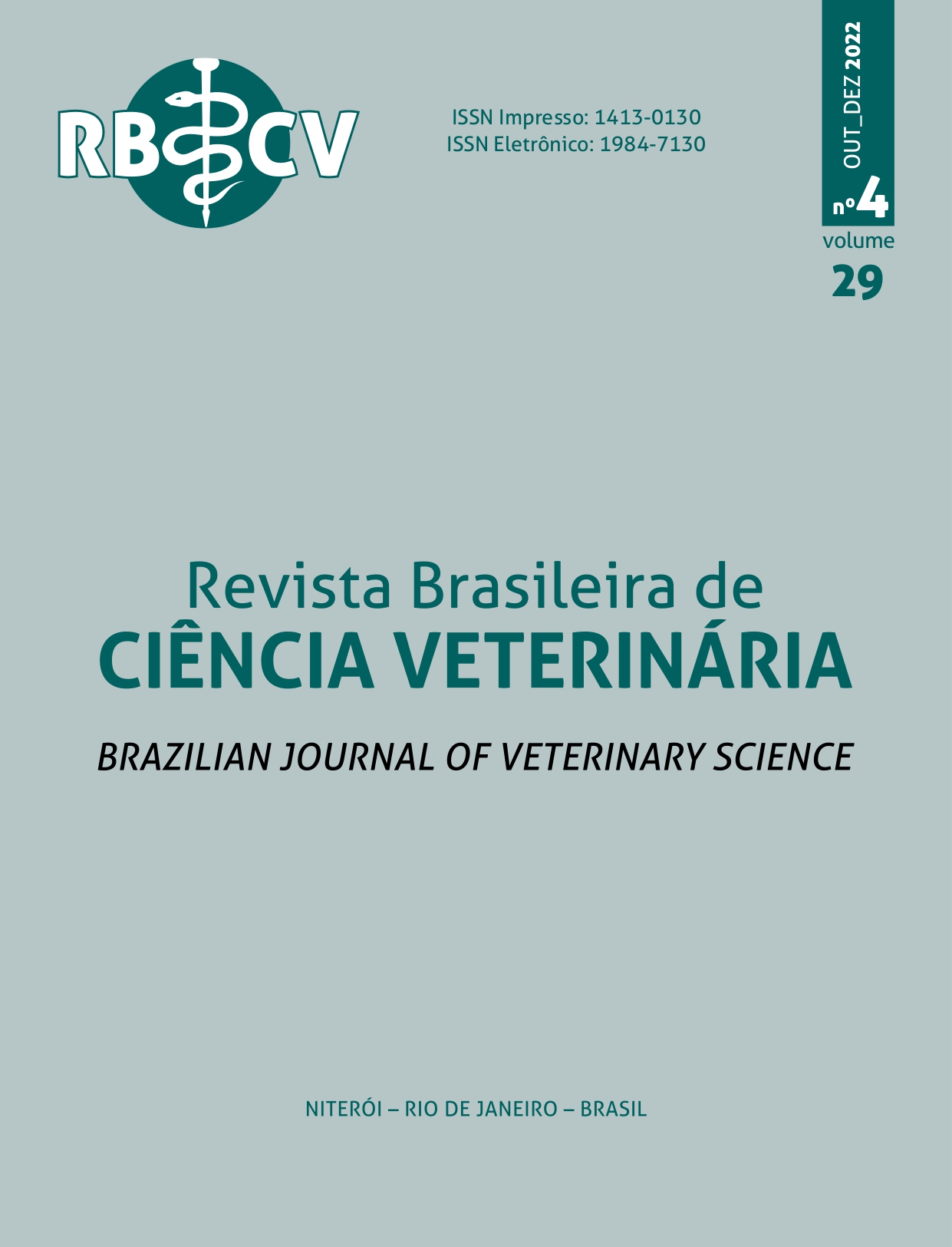Desordens hiperostóticas em American Bully
Abstract
The complex of hyperostotic disorders is a rare and self-limiting condition, which has the same histophatological characteristics, which courses with non-neoplastic bone proliferations. It affects young dogs of different breeds, with variability the bones affected. The complex is composed of craniomandibular osteopathy, calvarial hyperostotic syndrome and hypertrophic osteodystrophy. It may be present in the bones of the skullcap, jaws, cervical spine and appendicular skeleton. The present report describes the condition of a female dog, American Bully breed, entire, three months old, with a complaint of painful swelling of the jaws, hyporexia and drooling for 15 days, presenting on physical examination, reduced amplitude and pain of the temporomandibular joint, bilateral firm thickening of the skull in the temporal fossa region, palpable firm-consistent thickening of the mandibles and respiratory crackle. After clinical evaluation and complementary tests, a presumptive diagnosis of hyperostotic disorders complex was reached. It was instituted pain management as a treatment, being effective for the maintenance of physiological needs until the patient reaches the adulthood. The prognosis for this patient was considered good, since there was no evidence 46 of temporomandibular joint ankylosis and/or neurological
manifestations.


